It seems to be taking me longer to write these reports than it was attending Congress. Thanks to those who have been reading the posts and exploring some of the website links shared. It’s not quite the same as attending but my learnings may help some of you too.
Day 4 started with a sponsor presentation – this time it was FamilySearch and it was given by Thom Reed, an excellent speaker. He focused on all the ways we can use FamilySearch including their apps which were new to me. The FamilySearch Family Tree mobile app allows you to take your research with you and the Relatives Around Me app lets you see if any one else in the audience is related to you. A few people stood up and acknowledged each other but you must be in close proximity (like a conference room) and you must have your family tree in FamilySearch. Amazing. Check out the FamilySearch App Gallery.
Ruth Graham was next with Visualisation Technology for digital humanities and genealogy and this is where various university projects may be useful for genealogy although there is no one place to go. A lot of them seem to use historic maps with modern overlays. One URL I wrote down was The Great Fire of London which lets you see just how widespread the fire was. Another was Beyond 1914 with the University of Sydney and its about members of the university community involved in the Great War. Also look at The London Picture Map and Bomb Sight which maps the WW2 bomb census.
Then after yummy morning tea, it was another session with Thom Reed on finding elusive records in FamilySearch. I liked the way he used some Australian examples in his talk. In particular he was looking at unindexed image sets and advanced searching in historical records with filters, wildcards and exporting results. The trick is to navigate image waypoints ie an index may be digitised and you have to use it before going to the record. These are not findable through the usual search form. His example was the Queensland cemetery records 1802-1990. The series title is a little misleading as Queensland was not established until 1859 (Moreton Bay Penal Settlement 1824-1842) and I saw references to NSW and Norfolk Island. So always explore content as it can be broader than title suggests. I can see that I need to spend a few more hours fully exploring all the different ways of accessing FamilySearch.
My next session was Helen Smith talking about Gedmatch for DNA research. It’s a third party tool which is free to use and has various reports that can be generated easily. It is only for autosomal DNA and you can upload other relatives provided you have their permission. If you also upload a Gedcom file this makes it even easier to see family connections once your DNA matches are known. It’s been a while since I looked at Gedmatch and according to Helen there are now 800,000 in the database and that has probably grown since she did her slides!
After lunch it was Sue Stenning’s Writing Groups talk and this was mainly looking at the results of a survey she did exploring what society writing groups were doing. Many societies not in the survey results also commented from the floor about the value of belonging to a group. You can get assistance, motivation, support and work towards a goal of writing your family history or doing a blog. Most societies seem to have a writing group of some sort.
The fin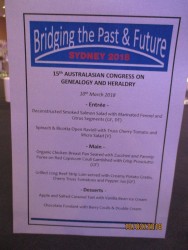 al plenary session of the Congress was Lisa Louise Cooke on Google Earth and what you can do with it for your genealogy. As usual I was razzle dazzled with the technology and thank goodness I bought the DVD package as I will need to work my way through it more slowly. But I will have more than 45 minutes! Since coming home I have also signed up for her free enewsletter which should make me a little more techno aware at least.
al plenary session of the Congress was Lisa Louise Cooke on Google Earth and what you can do with it for your genealogy. As usual I was razzle dazzled with the technology and thank goodness I bought the DVD package as I will need to work my way through it more slowly. But I will have more than 45 minutes! Since coming home I have also signed up for her free enewsletter which should make me a little more techno aware at least.
Then it was the closing ceremony, thanks to the sponsors, exhibitors, speakers,attendees and the organising committee. I have been to quite a few Congresses and this was definitely one of the best. I had a simply wonderful time and my final post on Congress will be looking at the various exhibitors that kept us busy during the breaks and at lunch time. That should be tomorrow if all goes to plan.
For those who were wondering what the congress dinner menu was, here it is! Thanks for reading this far.
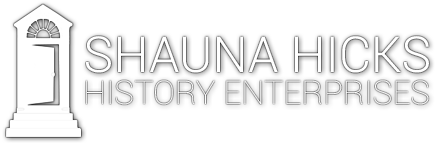

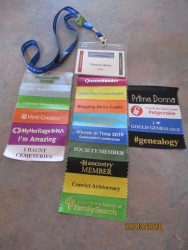
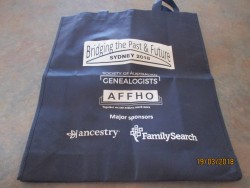
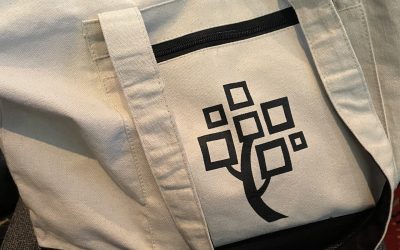
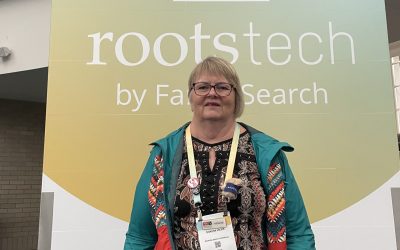
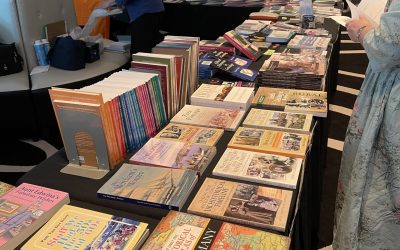
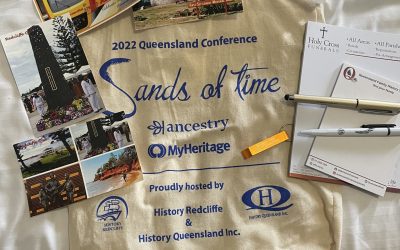
Thank you for the great summarisation of the Four Days of Congress, Shauna – you have filled me in on information for sessions I was unable to attend due to the scheduling conflicts!!! Good to know ALL the sessions were just as good as the ones I managed to attend!